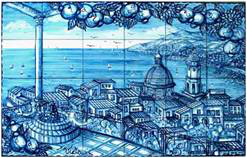Speaker
Dr
Werner Friedland
(Helmholtz Zentrum München, Institute of Radiation Protection)
Description
Mechanistic modelling of biological effects of ionizing radiation is an important tool complementary to experimental studies that allows testing hypotheses on radiation action and response mechanisms for improving our quantitative understanding of the underlying principles and systems. It helps analyse and interpret experimental observations and plays a crucial role in inter- and extrapolating data, frequently in a non-linear manner, beyond the limits of experimental protocols.
PARTRAC is a state-of-the-art tool for Monte Carlo-based simulations of track structures, radiation-induced damage to DNA, and repair of the induced DSB via NHEJ [1]. The DNA repair module [2] describes stochastically the hierarchical action of repair enzymes processing the DNA ends, explicitly considering their spatial distribution and complexity in terms of nearby lesions.
Experimental data on DSB and DNA fragmentation induced by photon and ion irradiations have been reproduced by PARTRAC calculations that account for the experimental DNA fragment length intervals and the adopted data analysis algorithms. For high-LET radiation the calculations predict significant yields of DSB associated with short DNA fragments below the threshold of detected fragment sizes. Recently, the non-linear DNA fragmentation measured at LBL after X-ray, N- and Fe-ion irradiation [3] has been compared to PARTRAC calculations in detail for 10-12 size intervals between 0.1 and 1120 kbp.
Likewise the DNA repair module has been successfully adapted to measured LET-dependent repair kinetics after gamma-rays and different N-ion radiation qualities [4], relating differences in repair kinetics to variations in complexity of damage induced by radiations of diverse qualities. Recently, an alternative hypothesis, linking the DNA damage response with heterochromatic and euchromatic regions within the cell nucleus, has been suggested [5-6]. The methodology, assumptions and first modelling results obtained when including this structural level into the suite of PARTRAC tools will be presented in view of corresponding experimental data.
Acknowledgement: Partially supported by the NoE “DoReMi” funded by EC.
References
[1] Friedland et al, Mutat Res 711, 28 (2011)
[2] Friedland et al, Radiat Res 173, 77 (2010)
[3] Löbrich et al, Int J Radiat Biol 70, 493 (1996)
[4] Friedland et al, Int J Radiat Biol 88, 129 (2012)
[5] Goodarzi et al, DNA Repair 9, 1273 (2010)
[6] Jakob et al, Nucl Acids Res 39, 6489 (2011)
Author
Dr
Werner Friedland
(Helmholtz Zentrum München, Institute of Radiation Protection)
Co-author
Dr
Pavel Kundrát
(Helmholtz Zentrum München, Institute of Radiation Protection)

